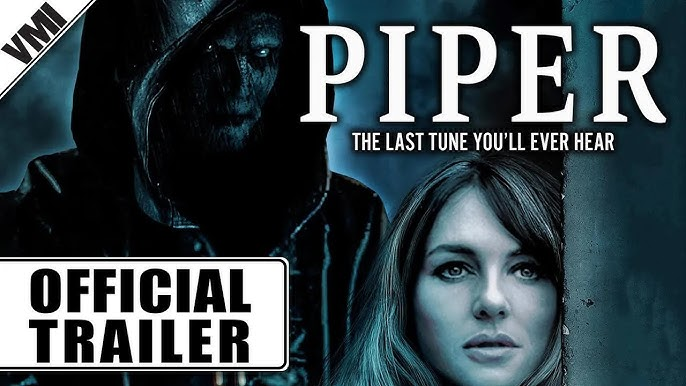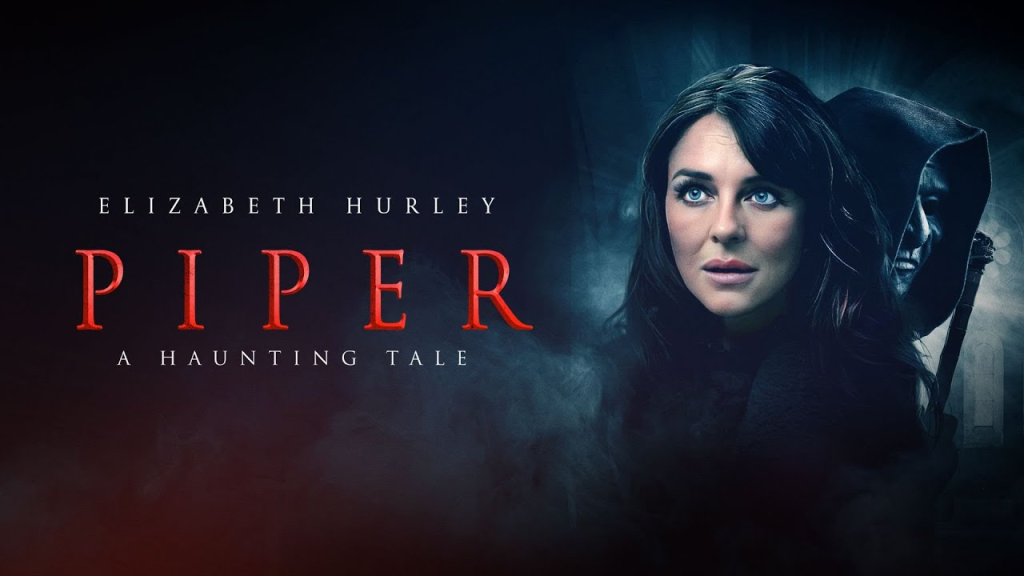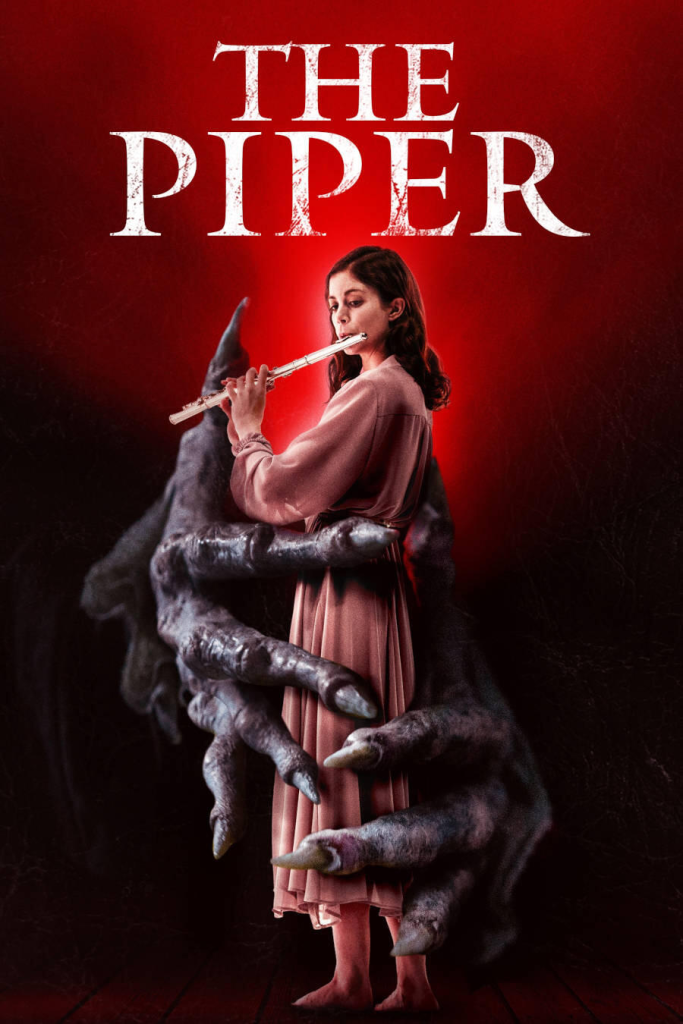PIPER (2024)

Introducing the Movie Piper (2024): A Modern Horror Take on the Pied Piper Legend
Released on November 12, 2024, Piper is a supernatural horror film directed by Anthony Waller that reimagines the classic fairy tale of the Pied Piper of Hamelin in a chilling, contemporary context. Starring Elizabeth Hurley and Mia Jenkins, the film blends folk horror, psychological tension, and supernatural elements to explore themes of guilt, retribution, and the sins of the past. Set in the atmospheric German town of Hamelin, Piper delivers a dark narrative about a vengeful spirit punishing those who have escaped justice by targeting their children. This article provides a comprehensive introduction to the film, covering its plot, production, themes, critical reception, and cultural significance.

Plot Summary
Piper centers on Liz Haines (Elizabeth Hurley), a history teacher who relocates from the United States to the quaint German town of Hamelin with her teenage daughter, Amy (Mia Jenkins). Liz has taken a teaching position at an international school, housed in a former prison, following the sudden availability of the job. Amy, unhappy about leaving her friends and adjusting to a new environment, struggles with the town’s eerie atmosphere and the local obsession with the Pied Piper legend.
As Liz and Amy settle in, they learn of disturbing incidents involving local children, including suicides and mysterious disappearances. The town’s dark history begins to surface, revealing that the Pied Piper is not just a fairy tale but a restless, supernatural entity (played by Arben Bajraktaraj) who seeks out those who have committed unpunished crimes and exacts vengeance by luring their children to their doom. Liz’s own dark secret from her past puts Amy in the Piper’s crosshairs, and strange occurrences—visions, rat infestations, and eerie music—escalate the sense of dread.

Amy finds an ally in Luca (Jack Stewart), a charismatic young Romani street magician, and his aunt Aishe (Tara Fitzgerald), who offer protection and insight into the Piper’s curse. As the Piper’s influence grows, children in Hamelin fall under his spell, sleepwalking toward a grim fate. Liz and Amy must confront the truth about Liz’s past and work with Luca to stop the Piper before Amy becomes his next victim. The film builds to a creepy, atmospheric climax, with the Piper’s haunting tune echoing through Hamelin’s medieval streets.
Production and Development

Directed by Anthony Waller, known for Mute Witness (1995) and An American Werewolf in Paris (1997), Piper was scripted by Waller based on a story by Duncan Kennedy. The film was produced by Freestyle Digital Media and 101 Films, with a budget that leaned heavily on atmospheric locations and practical effects to create its unsettling tone. Filming took place in Germany, leveraging Hamelin’s real-world association with the Pied Piper legend to ground the story in a tangible sense of place. The town’s medieval architecture, cobblestone streets, and Gothic buildings serve as a haunting backdrop, enhanced by cinematographer Roger Simonsz’s moody lighting and evocative framing.
The production aimed to balance horror with a teen-oriented narrative, incorporating elements of romance and coming-of-age drama to appeal to a younger audience. The Piper’s design, a mix of practical makeup and CGI, was crafted to evoke both menace and mystique, with his flute and swarm of rats as central motifs. The soundtrack, composed by Wilbert Hirsch and Anthony Waller, features an unsettling, melodic theme that mirrors the Piper’s hypnotic power, drawing comparisons to classic horror scores.

The cast includes notable performances from Elizabeth Hurley, who brings a layered intensity to Liz, and Mia Jenkins, whose portrayal of Amy captures the angst and resilience of a teenager facing supernatural terror. Tara Fitzgerald and Jack Stewart add depth to their supporting roles, with the film taking care to avoid stereotypes in its depiction of the Romani characters. The production faced challenges in balancing its ambitious premise with a modest budget, leading to some criticism of its visual effects and pacing, but the team’s commitment to practical horror elements and atmospheric storytelling shines through.
Themes and Symbolism
Piper explores several potent themes, with guilt and retribution at its core. The Pied Piper serves as a supernatural judge, punishing parents for their unatoned sins by targeting their children, a concept that taps into primal fears of losing loved ones due to personal failings. Liz’s hidden past and her desperate efforts to protect Amy highlight the theme of parental responsibility and the consequences of buried secrets.

The film also delves into the idea of betrayal, echoing the original fairy tale in which the people of Hamelin reneged on their promise to pay the Piper. This betrayal is mirrored in the modern narrative through Liz’s actions and the town’s collective denial of its dark history. The Piper’s curse symbolizes the inescapability of justice, suggesting that unresolved wrongs will eventually demand reckoning.
Hamelin itself is a character, its picturesque exterior masking a sinister undercurrent. The town’s transformation of a prison into a school reflects the theme of hidden darkness beneath a veneer of normalcy. The film’s use of rats as a recurring motif reinforces the sense of decay and infestation, both literal and metaphorical, as the Piper’s influence seeps into the community.
The inclusion of Romani characters like Luca and Aishe introduces themes of outsider perspectives and cultural prejudice. Rather than relying on clichés, the film positions them as knowledgeable allies, challenging stereotypes and adding a layer of social commentary. Amy’s journey, meanwhile, touches on adolescent rebellion and self-discovery, as she navigates her mother’s secrets and her own emerging independence.

Cast and Characters
The ensemble cast of Piper brings a mix of gravitas and relatability to the story:
- Elizabeth Hurley as Liz Haines: A history teacher with a dark secret, Liz is both protective and flawed, with Hurley’s performance balancing vulnerability and determination.
- Mia Jenkins as Amy Haines: The teenage protagonist, Amy is relatable and resilient, evolving from a reluctant newcomer to a determined fighter against the Piper’s curse.
- Jack Stewart as Luca: A charming street magician with Romani heritage, Luca serves as Amy’s romantic interest and guide, bringing warmth and mystery to the narrative.
- Tara Fitzgerald as Aishe: Luca’s aunt, a wise and protective figure who understands the Piper’s power and aids Amy and Liz.
- Arben Bajraktaraj as The Piper: The menacing spirit, portrayed with eerie physicality, whose limited screen time enhances his mystique.
Supporting roles, including Robert Daws as a local figure and Alma Rix as a grieving mother, add emotional weight to the town’s plight. The film’s focus on Amy and Liz’s mother-daughter dynamic grounds the horror in personal stakes, while Luca’s romance with Amy provides a hopeful counterpoint to the darkness.

Cultural Impact and Critical Reception
Piper premiered at FrightFest 2023, where it garnered attention for its bold take on the Pied Piper legend. Upon its wider release on digital platforms and DVD on November 12, 2024, the film received mixed reviews. Critics praised its atmospheric visuals, strong performances, and creepy premise but noted shortcomings in its narrative coherence and execution.
The Guardian’s Leslie Felperin described it as “comically tawdry and silly,” suggesting Hurley’s “almost-winking” performance hinted at a tongue-in-cheek tone, but criticized the film for lacking “simmering mystery”. Common Sense Media highlighted its disturbing themes, noting its appeal to “adults and older teens who enjoy the tropes and gimmicks of the genre,” but warned of sensitive content like self-harm and suicide. TL;DR Movie Reviews gave it a 2.5/5, acknowledging its “solid premise” but lamenting its inability to sustain narrative momentum.

Voices From The Balcony appreciated the film’s Hammer-esque aesthetic and creepy moments, such as the Piper stalking Liz on a train, but felt it was restrained by a low body count and lack of gore. Love Horror lauded its “genuinely chilling horror” and “majestic” setting, comparing it to classics like Suspiria. Audience reactions, as seen on IMDb, were polarized, with some praising the unsettling music and visuals, while others found the story “mediocre” and the effects underwhelming.
Piper stands out as one of two 2024 horror films inspired by the Pied Piper, the other being The Piper, starring Charlotte Hope and Julian Sands, released in March. The simultaneous emergence of these films underscores the enduring fascination with the legend, though Piper distinguishes itself with its focus on family dynamics and folk horror over The Piper’s music-centric supernatural threat.

Critical Analysis
Piper succeeds in creating a creepy, atmospheric experience, particularly in its early acts, where the gradual buildup of unease—through rat infestations, eerie music, and ghostly visions—sets a strong tone. Waller’s direction, paired with Simonsz’s cinematography, crafts memorable visuals, such as children sleepwalking through rain-soaked streets and the Piper’s shadowy presence on a darkened train. The film’s use of practical effects for the Piper and his rats adds tactile horror, though some CGI moments are less convincing.
The narrative, however, struggles to maintain its momentum. The teen romance between Amy and Luca, while appealing to younger viewers, feels redundant to some critics, and the film’s pacing falters in its second half as it rushes toward a resolution. The decision to keep the Piper’s screen time minimal builds suspense but leaves some viewers wanting more of the titular villain. The film’s low body count and restrained gore may disappoint hardcore horror fans, though its psychological and supernatural scares align with its folk horror roots.

The performances, particularly Hurley’s and Jenkins’, anchor the film, with Hurley’s portrayal of a guilt-ridden mother adding emotional depth. The film’s handling of sensitive topics like suicide and self-harm is divisive, with Common Sense Media noting their inclusion but questioning their sensitivity. Overall, Piper is a flawed but ambitious effort that shines when embracing its Gothic atmosphere and folklore-inspired horror.
Why Piper Resonates
Piper taps into the timeless appeal of the Pied Piper legend, a story rooted in betrayal and loss that resonates across centuries. Its modern setting and focus on a mother-daughter relationship make it accessible to contemporary audiences, while its folk horror elements evoke classics like The Wicker Man. The film’s exploration of guilt and justice feels particularly relevant in an era of reckoning with hidden truths.
For younger viewers, Amy’s journey and her romance with Luca offer relatability, while horror enthusiasts will appreciate the creepy visuals and unsettling sound design. The film’s imperfections—its uneven pacing and occasional narrative clutter—do not overshadow its ability to deliver chills and a fresh take on a familiar tale.

Conclusion
Piper (2024) is a bold, if imperfect, addition to the horror genre, transforming the Pied Piper of Hamelin into a vengeful spirit for a modern audience. With its atmospheric setting, strong performances from Elizabeth Hurley and Mia Jenkins, and a haunting premise, the film captures the eerie essence of its source material while exploring universal themes of guilt and redemption. Though it struggles with narrative focus and execution at times, its creepy visuals and folk horror sensibilities make it a worthwhile watch for fans of supernatural thrillers and fairy tale adaptations. As the Piper’s tune lingers, Piper invites viewers to confront the shadows of the past—both in Hamelin and within themselves.